Developing a Cyber Security Improvement Plan Proposal: PureLand
VerifiedAdded on 2023/04/26
|5
|928
|93
Case Study
AI Summary
This document presents a cyber security improvement plan proposal for PureLand Wastewater Treatment Inc., focusing on addressing vulnerabilities identified by the Department of Homeland Security (DHS) concerning their Industrial Control System (ICS). The proposal highlights the current state of PureLand's cybersecurity, noting the absence of comprehensive security mechanisms, inadequate protection for chemicals and trade secrets, lack of antivirus software, and insufficient asset tracking. It identifies weaknesses in the network architecture, such as a single firewall and the absence of intrusion detection systems. The proposal outlines potential threats, including external attacks and internal misuse, categorizing vulnerabilities into platform, network, and policy/procedural issues. It references applicable regulations and compliance standards, including NIST guidelines and RBPS metrics. The desired future state involves implementing additional firewalls, strengthening defense strategies, involving stakeholders, and establishing a Demilitarized Zone to segregate control and corporate networks, aiming to enhance the overall security posture of PureLand's ICS system. The document concludes by emphasizing the urgency for PureLand to address these cybersecurity issues to meet DHS requirements.
1 out of 5
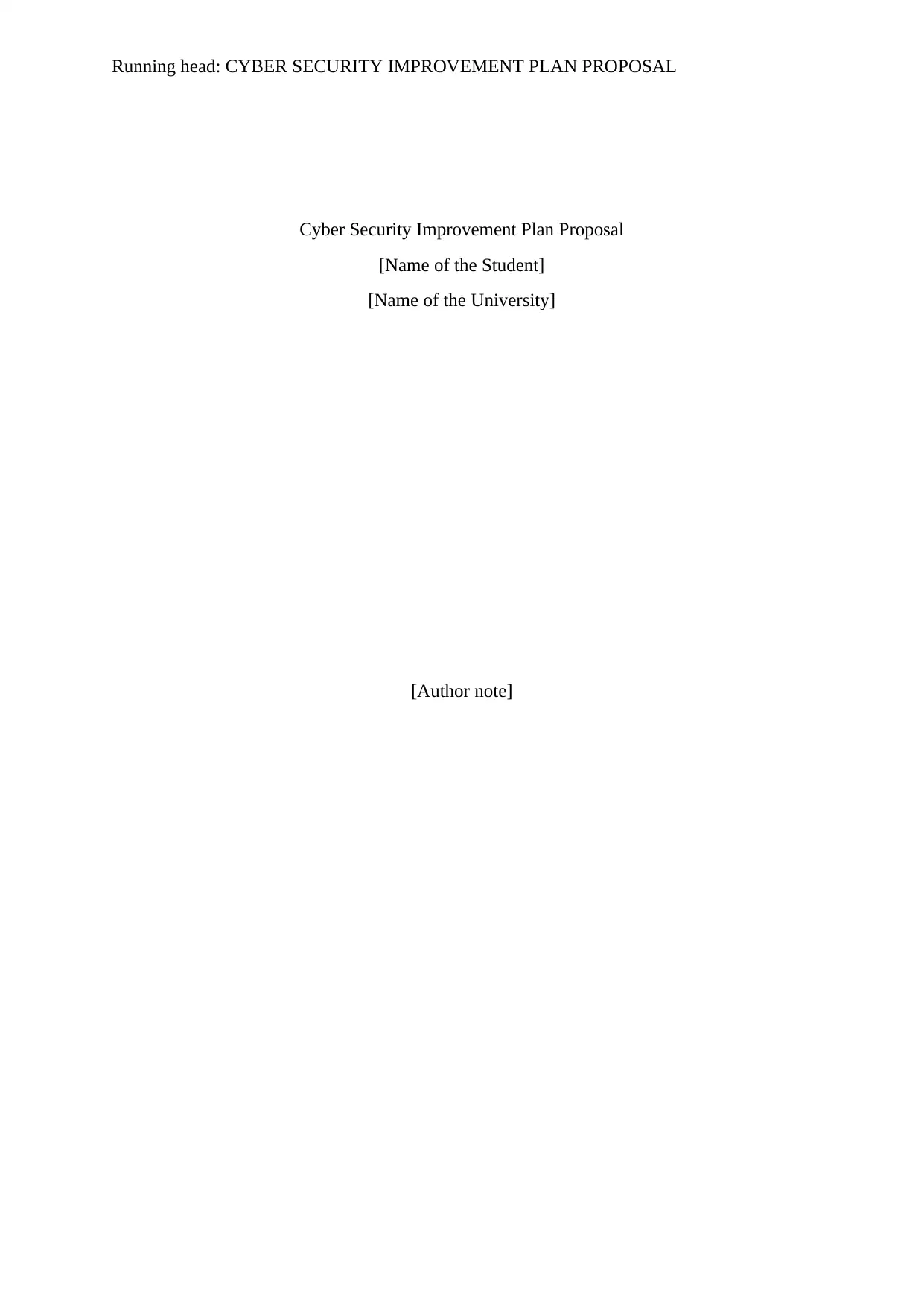
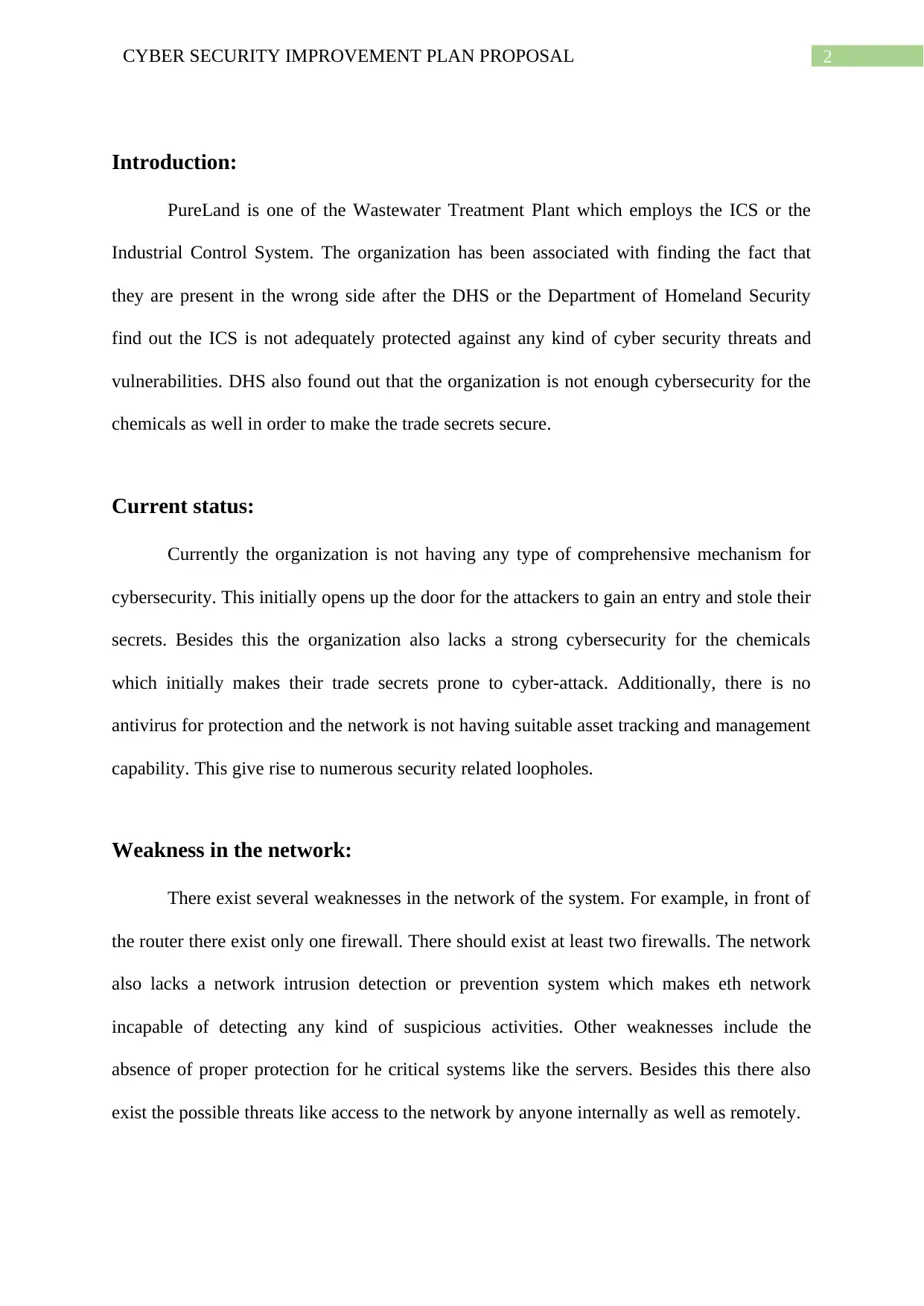
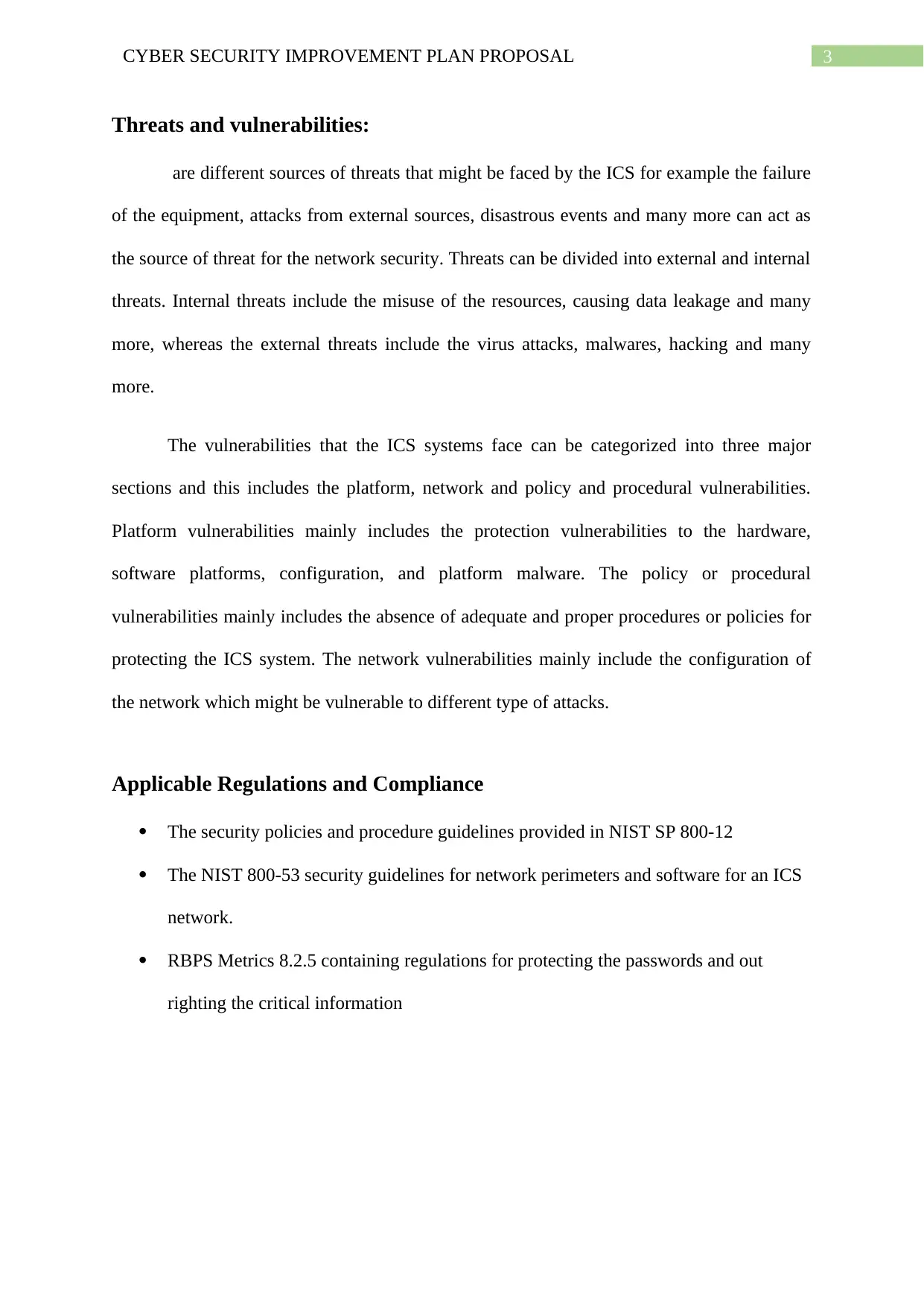

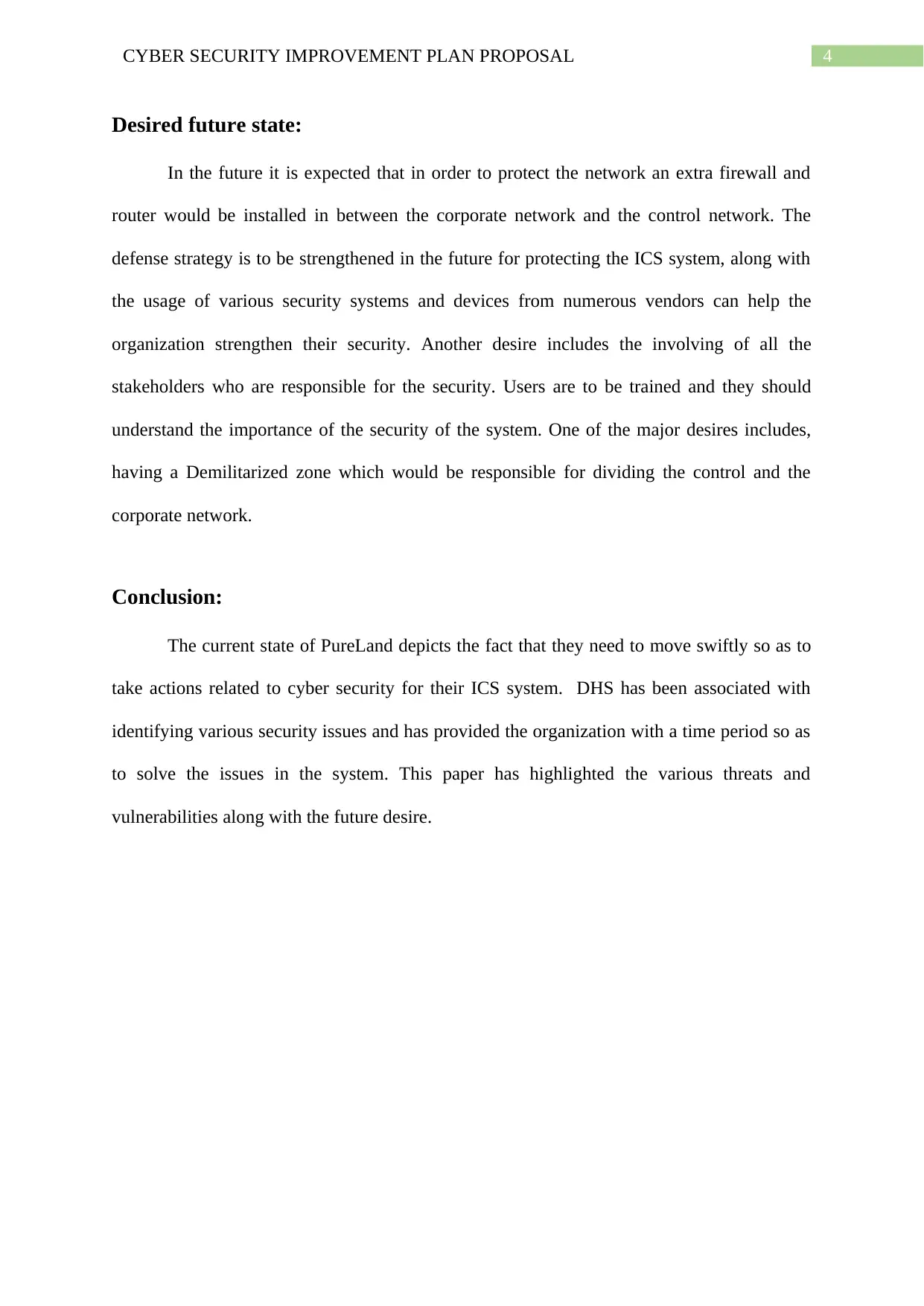
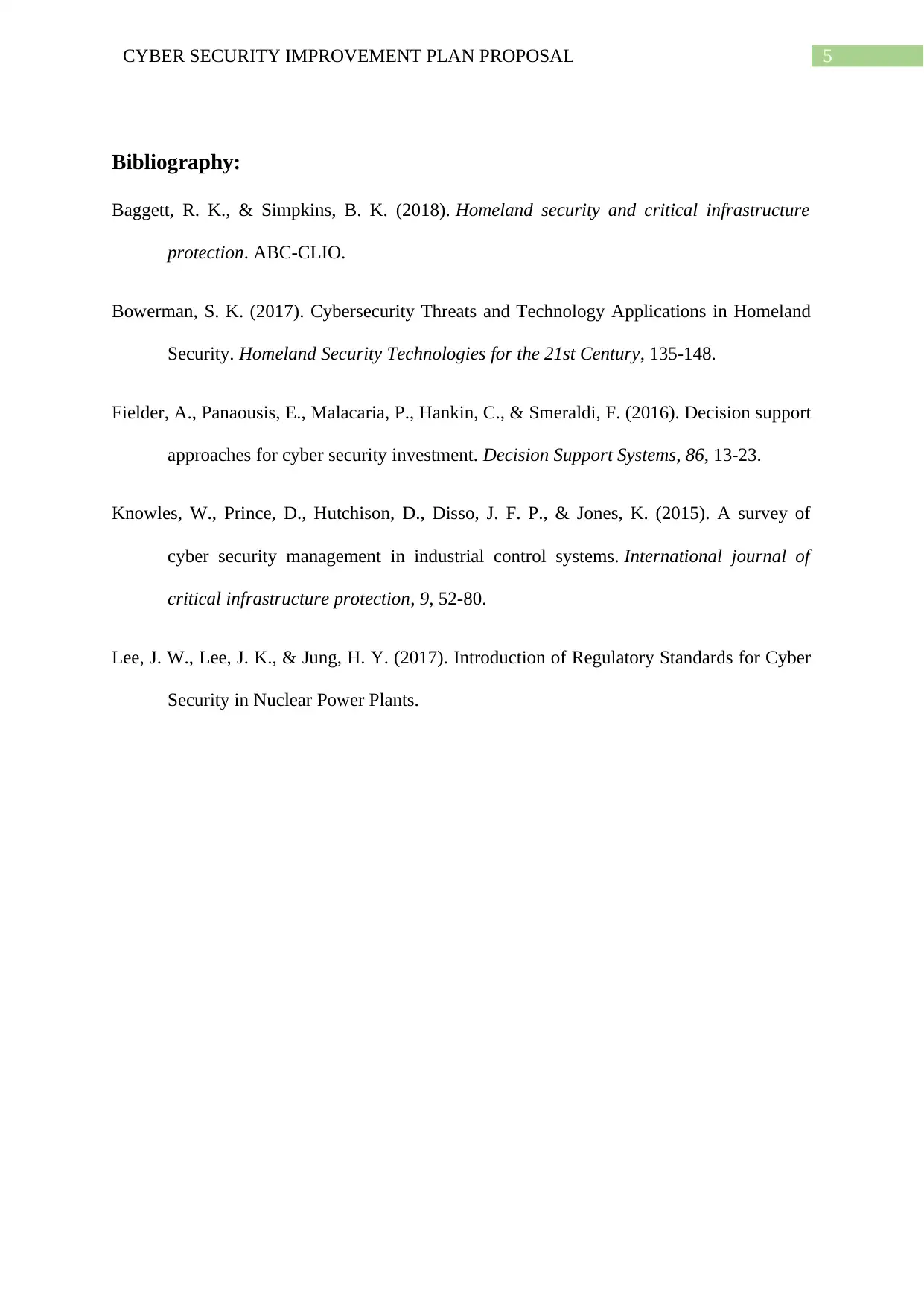






![[object Object]](/_next/static/media/star-bottom.7253800d.svg)